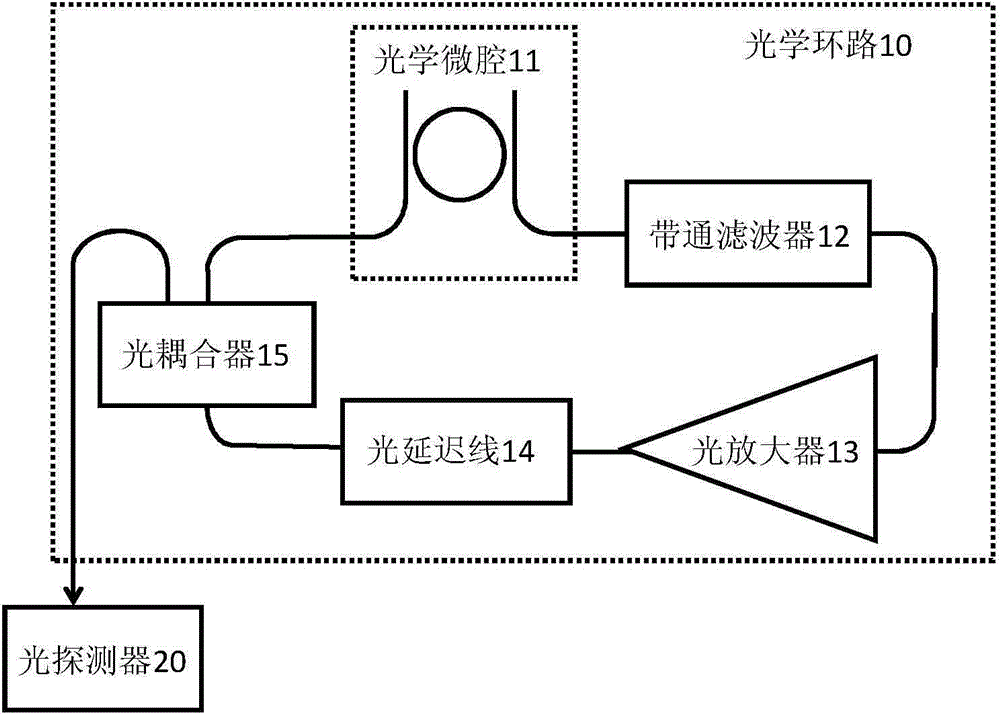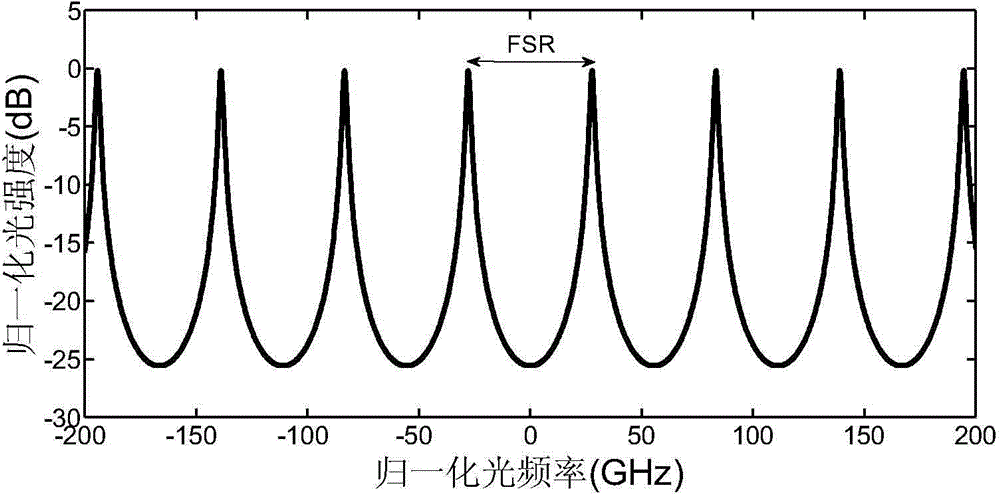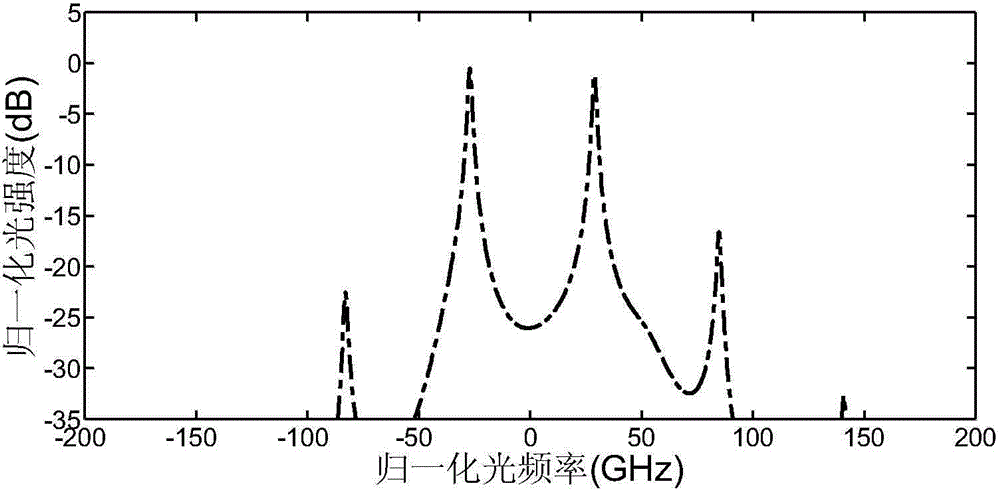Frequency stabilization type photoproduction microwave signal source based on optical microcavity
An optical microcavity and optically generated microwave technology, applied in solid-state lasers, etc., can solve the problems of difference frequency signal frequency drift, poor practicability, lasing wavelength drift, etc., achieve frequency stability improvement, improve frequency stability, and suppress phase noise Effect
- Summary
- Abstract
- Description
- Claims
- Application Information
AI Technical Summary
Problems solved by technology
Method used
Image
Examples
Embodiment Construction
[0025] The present invention will be described in further detail below in conjunction with the accompanying drawings and embodiments.
[0026] Such as figure 1 As shown, the present invention is based on an optical microcavity frequency-stabilized photogenerated microwave signal source, including an optical loop 10 and a photodetector 20. The optical loop 10 is mainly composed of an optical microcavity 11, a bandpass filter 12, an optical amplifier 13 and an optical coupler 15. In this embodiment, the optical loop 10 also includes an optical delay line 14. The optical loop 10 is used to generate two lasers with different frequencies, that is, dual-frequency laser, and the photodetector 20 is used to receive the dual-frequency laser output from the optical coupler 15, and then use the optical difference frequency effect to obtain optically generated microwave signals.
[0027] Specifically, the optical microcavity 11 is used to periodically select a plurality of lights with fi...
PUM
| Property | Measurement | Unit |
|---|---|---|
| Length | aaaaa | aaaaa |
Abstract
Description
Claims
Application Information
 Login to View More
Login to View More - R&D
- Intellectual Property
- Life Sciences
- Materials
- Tech Scout
- Unparalleled Data Quality
- Higher Quality Content
- 60% Fewer Hallucinations
Browse by: Latest US Patents, China's latest patents, Technical Efficacy Thesaurus, Application Domain, Technology Topic, Popular Technical Reports.
© 2025 PatSnap. All rights reserved.Legal|Privacy policy|Modern Slavery Act Transparency Statement|Sitemap|About US| Contact US: help@patsnap.com



